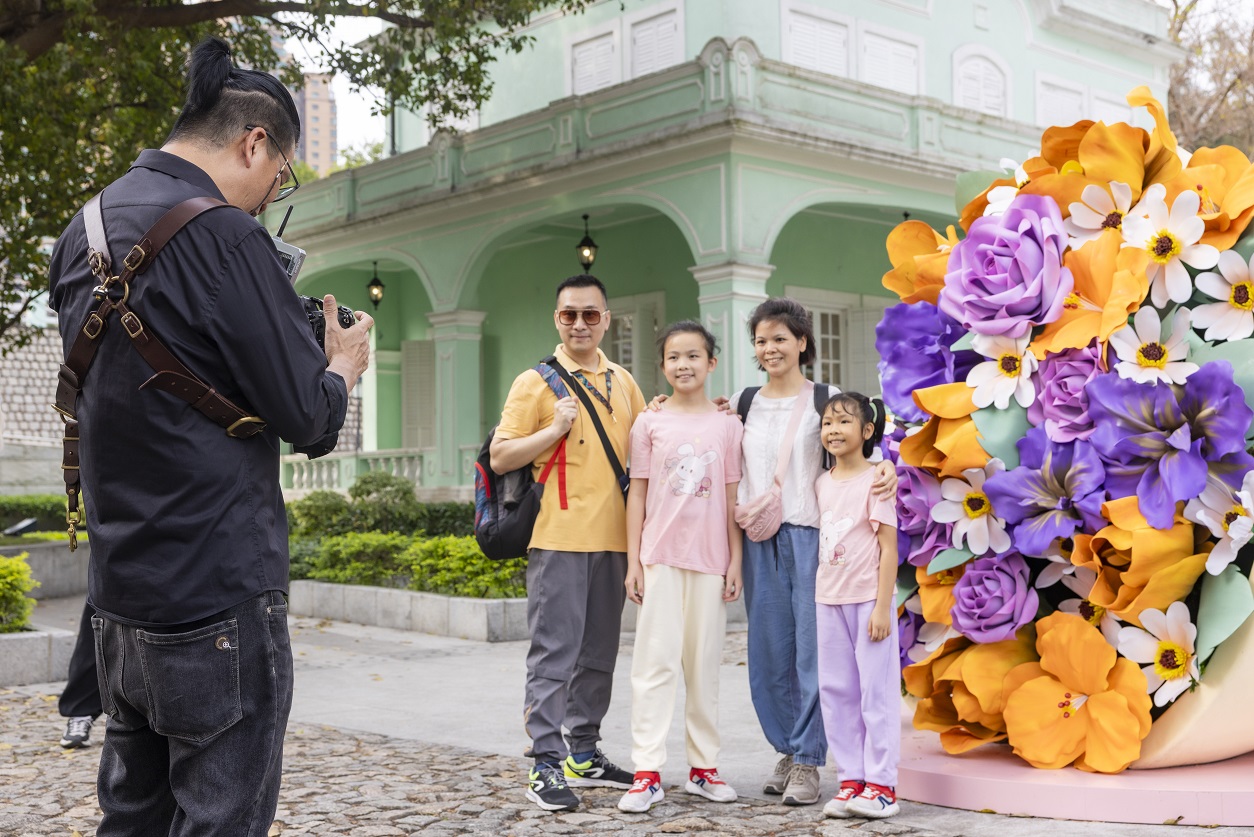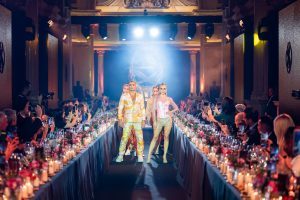With Seoul maturing as a business events destination, other South Korean cities are ready to catch overflow business coming from the capital as companies start expanding their itinerary into a multi-city programme. Also, as corporate groups mull their second or third visit to the country and are more open to a range of choices, destinations outside Seoul are vying for their turn in the spotlight.
The second largest city with four million people and located in the country’s southeastern tip, Busan hopes to stand beside Seoul as a major meetings and events destination in the Korean peninsula.
A convention city

“We have everything that is needed to host an international event,” says Raymond Kim, secretary general, Greater Busan Convention and Visitors Bureau (CVB), adding that business and leisure facilities continue to expand, and these are aimed at corporte groups.
The Busan Exhibition and Convention Center, the city’s major events venue, has doubled in size with the opening of a new exhibition wing and 4,000-seat auditorium, which made it in time for the 55,272-strong 95th Lions Clubs International Convention in late June. The five-day event was the largest to be hosted to date with delegates coming from 120 countries.
One of the main highlights of the programme was the parade at the Suyeong Bay Yachting Center, where more than 40,000 delegates donned traditional Korean costumes and performed traditional dances along the coastal road leading up to the entrance of Dongbaek Island.
In 2011, Busan climbed two spots to number four in Asia and number 15 in the world in the annual ranking of convention cities by the UIA (Union of International Associations), placing behind capital cities Singapore, Seoul and Tokyo. It has hosted 108 international meetings in the past year.
Kim says this is a tremendous achievement for a city that started targeting the conventions segment just 10 years ago.
Meanwhile, Suin Kim, manager of tourism destination marketing at Greater Busan CVB, notes that with hardware for conventions pretty much in place, the bureau will be expanding its focus to the incentives market.
“We have been concentrating on putting up new buildings with an eye constantly on the number of conventions and the number of delegates,” she says. “Now, we want to focus on software programmes that will help grow incentives groups.”
She adds that a programme of experiences around the city’s food, culture and heritage will also bring the benefits of hosting meetings and conventions to a wider swathe of the community and deepen the delegates’ connection to Busan.
Seaside advantage

Events specialists say Busan’s major draw is its beaches, which Seoul does not have.
The famed Haeundae Beach is a great site to enjoy a range of water sports activities such as jet ski and sailing. It is also the location of the 13,000 sqm Busan Aquarium which offers visitors an opportunity to watch deep sea creatures cavort around an 80-metre tunnel.
As the country’s largest port – and the fifth busiest port in the world – the city is the main entry point for cruises that pass by Korea.
“There are a number of cruise ships that dock in Busan. One of the most popular cruising routes is between Japan – either from Tokyo or Yokohama – and Busan, which only takes about six to seven hours,” says Bobby Kim, chief marketing officer at Jane Tour and DMC.
“The weekend programme would typically have groups leave Japan late night on a Friday, arriving in Busan at 6am the next day. They stay in the city for the entire day, and then set out for Seoul early on Sunday morning via the KTX high-speed train for some sightseeing and shopping. They take the train back to Busan later in the day to catch the late-night cruise back to Japan.”
For groups in Busan, the sea also provides a sweeping backdrop, bristling with vessels that can be used, not only for lunch and dinner cruises, but also for meetings, seminars and other events.
Since it is not as densely populated as Seoul, Busan's daily pace is more laid back.
“Traffic flow is better and travel from point A to point B takes less time,” says Charli Kim, Busan branch office manager of US Travel. “Being a coastal city, Busan offers a varied landscape with the sea, land and mountain.”
With several heavy industries located within and around the city, he points out corporate groups can arrange technical tours of plants related to their respective industry, from ship building to car manufacturing. Big Korean companies with facilities in the city include Hanjin Heavy Industries, Hyundai Motors and Kori Nuclear Power Site.
These sorties add a unique education component to a group itinerary, which also gives delegates the opportunity to see first hand Busan’s progressive face. They offer a good counterbalance to the traditional elements that are normally included in the itinerary.
“Groups can make their own Korean traditional pottery in Gijang and then learn the tea ceremony at Gijang Culture Decorum Youth Centre, go to the Busan Museum and wear a traditional hanbok costume, and attend a Korean cooking class of their choice,” says Kim of US Travel, adding that he recommends that groups should try their hand in making Korean sweet rice cakes.
Cultural, historical and nature-based programmes can be designed with national parks, centuries old temples and listed Unesco World Heritage sites located within just a few hours from the city.
Definitely not to be missed is the Janganyo workshop and gallery of Kyung Gyun Shin, a master craftsman specialising in traditional Korean ceramics, based in Busan’s Gijang area. Groups not only see Mr Kyung work on a traditional potter’s wheel, they also get to make their own signature ceramic pieces and afterwards enjoy a cup of tea at his gallery.
Modern pursuits also abound. From shopping to golf, choices are limitless. For film aficionados, a visit and perhaps, a movie viewing experience at one of the city’s new iconic landmarks, Busan Cinema Center, is certainly a treat.
If there is one challenge that needs to be addressed urgently, it is the number of hotel room inventory.
“There are about less than 10,000 rooms in the city and only about six to seven international-brand hotels,” says Bobby Kim of Jane Tour & DMC, adding that in some cases groups meeting in Busan stay in hotels in nearby areas about an hour away.
MUST VISIT
Shinsegae Department Store Centum City
(http://english.shinsegae.com/english/main.asp)

Another of Busan’s world records, this sprawling 293,906 sqm complex – which was built in June 2009 – currently reigns as the largest department store according to the Guinness World Records. Groups get much more than retail therapy from this leisure and cultural facility, as it offers venues for a range of experiences. It has a beautiful spa, an impressive 60 tee golf driving range, a hot spring, an ice rink, an arts gallery and a huge multiplex, among others.
Jagalchi Seafood Market
(www.jagalchimarket.or.kr)

To feel the pulse of the native Busan people, Jagalchi Seafood Market – the largest in South Korea – is the place to go. Open daily from 8am to 10pm, tours can be arranged where groups can eat a variety of fresh sashimi at cheap prices to their heart’s delight. The new seagull-shaped building, opened in 2006, houses not only a wet market, but also rows of seafood restaurants, a wedding hall, a cultural exhibition space and a shopping mall. The waterfront park on the ground floor, facing the Namhang Sea, is a popular spot for visitors and locals who want to take in the fresh sea breeze.
Diamond Bridge and Dadaepo Fountain Sunset of Dreams
(www.gwanganbridge.or.kr and http://www.gwanganbridge.or.kr)

The evening sky serves as a perfect setting for some of the city’s attractions, so a night tour is a good after-dinner activity. The 7,420-metre, two-storey Diamond Bridge is a sight to behold when the lights are up, changing into 100,000 shades of colour throughout the evening. The Dadaepo Fountain Sunset of Dreams is an eye magnet with its synchronised performance, combining music, water and lights. The fountain shoots 55 metres into the sky with its 1,046 nozzles and 27 smaller fountains. Every night, it presents 27 unique features as 300 tunes from K-pop to classics blare out from the speakers. Not to be missed as well is the record-breaking cantilevered roof of the newly opened Busan Cinema Center, which light up the evening sky with more than 40,000 LED lights (See Themes, Mix June/July issue).
Jeotbyeong Lighthouse
(www.busanpa.com)

A port city, Busan has hundreds of lighthouses guiding ships to shore. In recent years, local authorities built ones with unusual shapes, not only as city attractions, but also as a public statement. In 2009, Jeotbyeong Lighthouse, shaped like a baby bottle, was unveiled at Seoam Port. It was intended to support the city’s bid to host the IUSSP International Population Conference, as well as to draw attention to the local childbirth policies. Another built in 2008, the Yagu Lighthouse, comes as a baseball trio – a ball, a bat and a glove – to mark South Korea’s gold medal win in baseball at the Beijing Summer Olympics.
FAST FACTS
Access: Gimhae International Airport has 568 weekly international flights, linking Busan to 29 cities around the world. Carriers flying to the city include Korean Air, Asiana Airlines, Japan Airlines, China Eastern Airlines, Vietnam Airlines, Philippines Airlines and Thai Airways.
Most visitors, however, arrive from Seoul via the high-speed KTX train, which takes just two hours and 10 minutes. Road travel from Seoul to Busan is also an option via chartered coaches, but this takes between six and eight hours.
Climate: There are four seasons but these are relatively mild, with cool summers and temperatures in winter hardly dropping below zero. Average temperature year-round is 14.4°C.
Visa: A single-entry visa is valid for three months. Citizens of more than 45 countries can enter South Korea without a visa, including Australia, Hong Kong, Japan, Taiwan and the US, to name a few. Visit the Korea Immigration website at www.immigration.go.kr for details.
Language: Hangeul is the official language. Many young people are now proficient in other languages particularly English, Japanese and Chinese. The Before Babel Brigade volunteer interpreters are fluent in 18 languages and are available by calling 1588 5644.
Contact: Greater Busan CVB
tel: +82 51 740 3600
www.busancvb.org
THE PROFESSIONALS
Jane Tour & DMC
email: darling@janetour.com/dmc@janetour.com
www.janetour.com
US Travel
email: greatwall2005@hotmail.com
www.ustravel.kr
Gigi Onag


